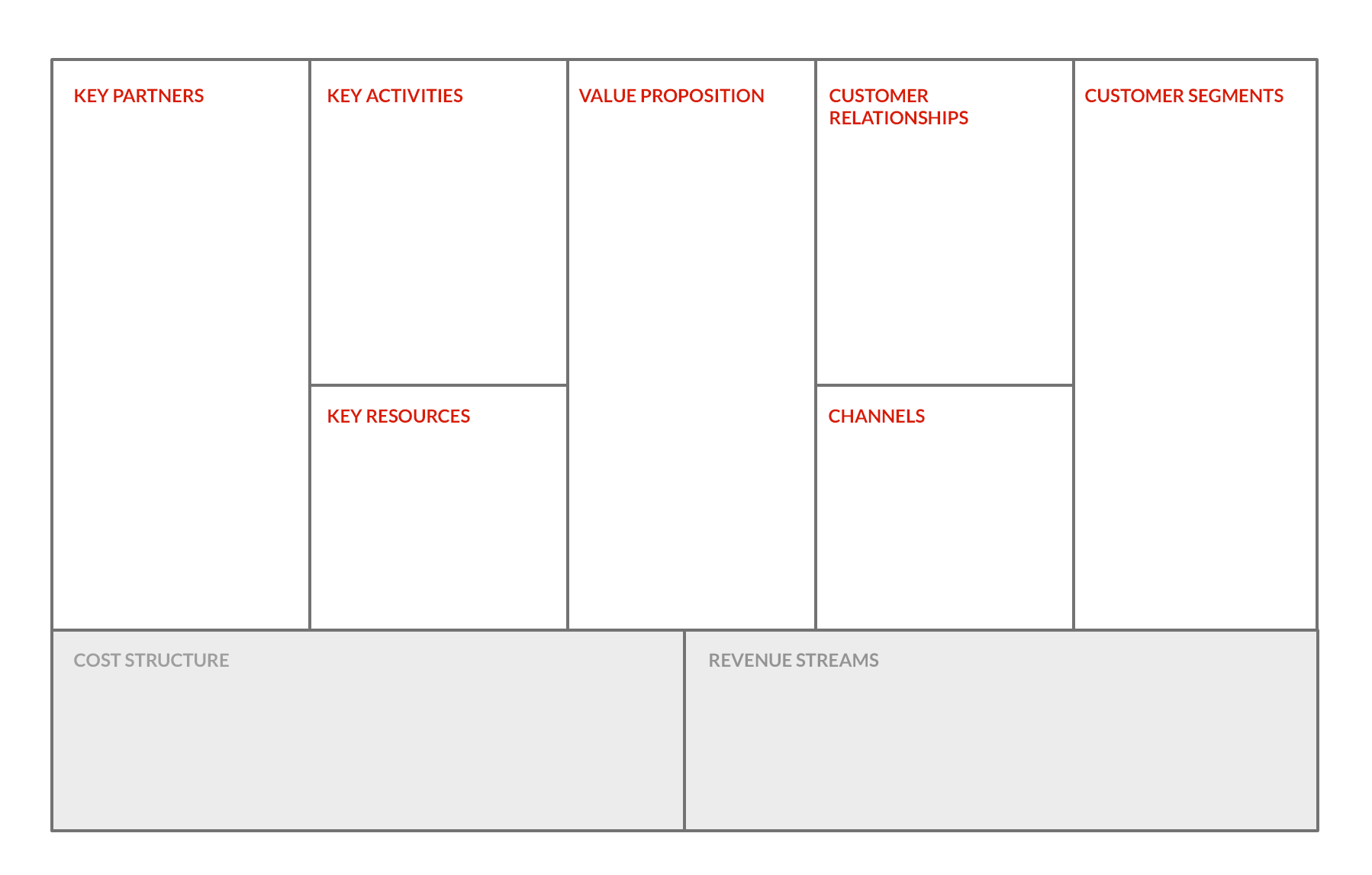
DHHS CYAP was formed on the principles of creating a shared forum and directory of the multitude of supporting services for children, youth, family, and marginalised groups such as indigenous Australians, across the state.
So we reached for a tried and proven tool to assist with this exercise: the Business Model Canvas (BMC), or rather, our interpretation of the BMC for Government which we've called the Government Model Canvas (GMC).
Here we’ll explore the BMC, and how we formed our GMC along with some valuable insights.
Some key considerations for this project included:
- Design for Government is not like business
- All stakeholders need a single discussion forum
- An agreed singular vision is essential to guide the process.
So what is a Business Model Canvas:
A Business Model Canvas is a simple tool that helps identify how an organization creates, delivers, and captures value on a single page. It is a fantastic tool for commercial organisations and entrepreneurs, but out of the box, is not the best framework for governmental models.
What is a Business Model Canvas (BMC)?:
It breaks down a business into a number of components:
- Customer Segments - the specific group of people that the organization aims to serve
- Value Proposition - a clear description of the company’s offering and how it solves problems or creates value for customers
- Channels - the means that a company uses to reach its customer segments to communicate with them and to deliver products and services to them
- Customer Relationships - the methods used to maintain relationships with customer segments
- Revenue Streams - the income generation and collection mechanisms in the business
- Key Resources - the most important assets that the company needs to make the other elements of the business model work
- Key Activities - The most important things that a company must do to make its business model work
- Key Partners - The network of suppliers and partners that make the business model work
- Cost Structure - The major costs that need to be incurred to sustain the business model
How do you create a Government Model Canvas?
A BMC works very well for businesses, but government has different drivers and levers. With DHHS we eliminated the Cost Structure and Revenue cells as they are commerically focussed. This changed the character of what traditionally would be a ‘business’ canvas into a canvas of more intangible values.
There are other models which use the Cost Structure and Revenue cells for internal stakeholder value stream mapping, but for the purposes of this project we decided to use this simpler model. For more on this see ‘Recommended further reading’ at the end of this article.
Using the ‘GMC’ helped us understand the pain points DHHS and the wider group were experiencing in bringing a service like theirs into being. This included:
- the needs of the many dispersed groups acting within and outside government
- the characteristics of their users and stakeholders
- all those who interact with each organisation and with each other.
Undertaking this was particularly important to align almost 30 stakeholder organisations from across the state. Multiple audiences have very different drivers and needs from the site, which necessitated different value statements, relationship and channels combinations to be documented.
Insights:
The big insight for us was not really an insight at all, but something somewhat obvious and often overlooked, which is: have the right people in the room from the beginning, and keep it simple.
Government is complex by nature. 30 odd points of view can get complicated very fast. We found simplicity was key. Our approach boiled down to using the ‘GMC’ to help the group identify and understand all key audiences, each other, and collectively form what the resonant messages to each of them will look like. These laid the foundations for the site information architecture, user and customer experience and design, all from a user-centric standpoint.
We found that participants who did not attend these initial workshops tended to have a singular view of the project and required background briefings to get them up to speed.
You say ‘tomato’ , I say ‘tomato”
Simplicity was ensured by giving participants fat markers and small sticky notes which they used to fill out the GMC cells. It may seem overly simplistic but using a fat marker on a post-it necessitates economic descriptions and avoids unnecessary detail. The result is a simplified bullet point view for all parties.
This enabled us to create a shared language by understanding any semantic differences and eliminating duplications.
Next, common and logical grouping of ideas and themes were identified. Now the magic of a BMC/GMC happened, when all the points of view begin to align into singular vision for the site and service.
It is always fascinating to see a shared vision form before a groups eyes. It creates a sense of camaraderie, excitement and a shared sense of purpose, which can be the glue for a dispersed group such as this. This formed one single project ‘picture’ everyone understood and collectively aligned upon to find the projects ‘true north’.
Outcomes:
Salsa Digital went on to successfully design and build the Children and Youth Area Partnership (CYAP) site in a very tight timeframe. We found that stakeholder management was greatly helped by using a ‘GMC’ approach, especially for those organisations that have large and diverse groups.
Recommended further reading:
Using Business Model Canvas for Social Enterprise Design
Creating a User-Centered Approach in Government
McKinsey: Government by design: Four principles for a better public sector

